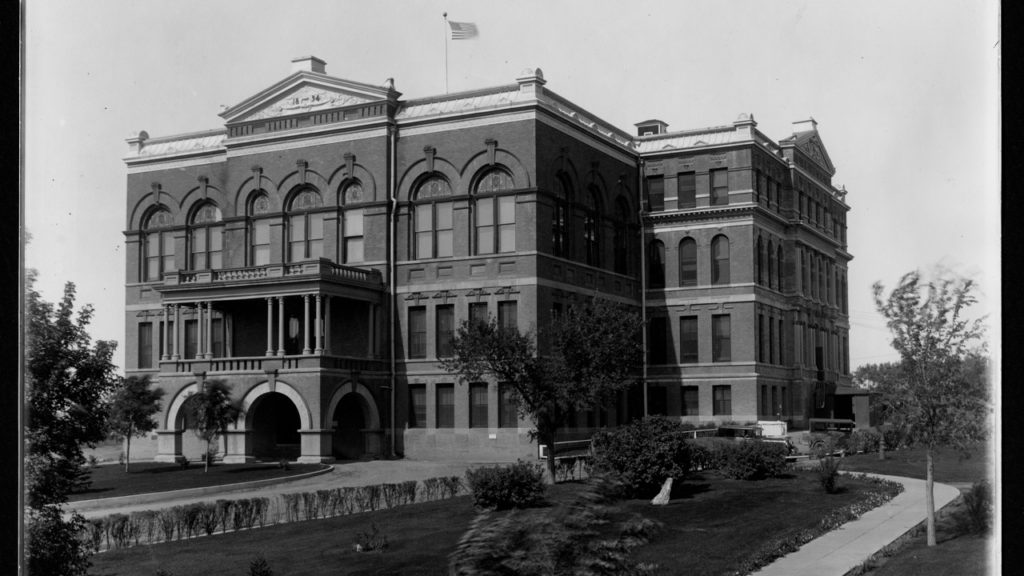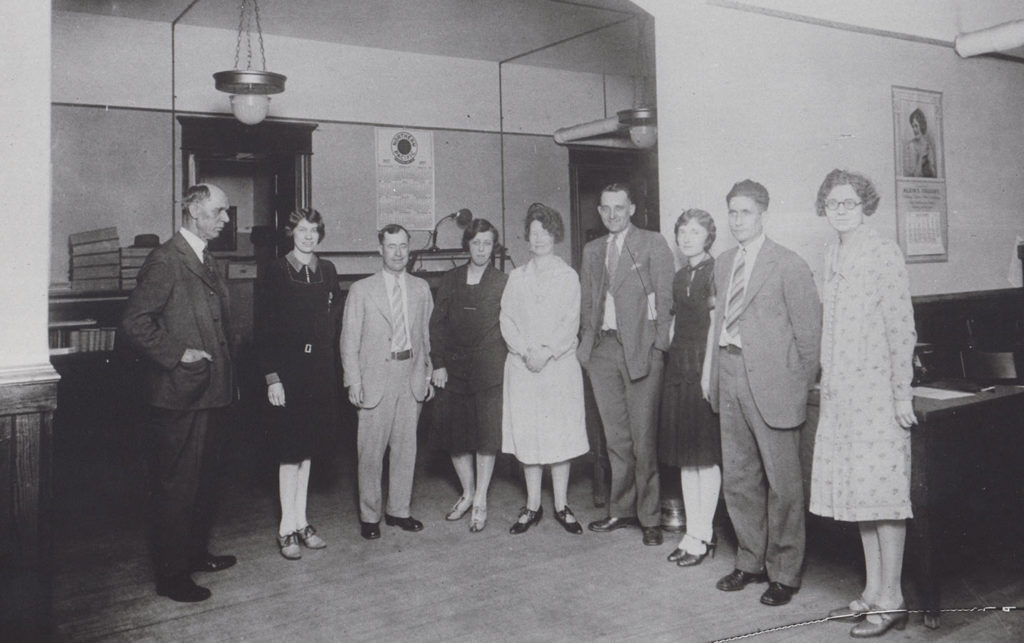
The enabling legislation in 1919 required that the new Bank of North Dakota must be open and doing business within 90 days of the adjournment of the state Legislature. The new three-member Industrial Commission went immediately to work.
James R. Waters was hired as the manager of the bank, over the strenuous objections of Attorney General William L. Langer. Waters had 20 years of commercial bank experience. For three years he had served as a state bank examiner.
The director-general of the Bank of North Dakota was F. W. Cathro, formerly the cashier of the First National Bank of Bottineau.
The Bank of North Dakota opened its doors with 46 employees on the corner of Seventh and Main Streets in Bismarck, North Dakota, July 28, 1919.

In his history of the first years of the Bank of North Dakota, Alvin S. Tostlebe writes:
“The Bank’s relation to the existing credit structure was to be similar to that of a federal reserve bank to the member banks in its district. It was to do a very limited business aside from that conducted with banks; the reserves of the state were to be concentrated in it; it was to be the center of a par clearing and collecting system; it was to furnish it credit to the public primarily through the medium of the local banks which would rediscount with the Central Bank; it was to be intimately connected with the fiscal operations of the state, for it would have charge of the sale of state securities and would be the sole legal depository of all public funds.”

